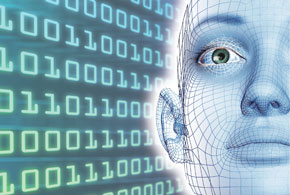Over the last few years, facial recognition has evolved from a futuristic idea relegated mostly to science-fiction films to a mainstream of society. Facebook tags photos using it; Google labels pictures with it.
A number of banks and other institutions have also begun to use facial recognition—in some cases to replace traditional passwords. Despite a few hiccups and glitches, the biometric technology is now ready for prime-time.
It’s reasonable to think that, at some point in the not-too-distant future, retailers and others are likely to follow. MasterCard has already tested facial recognition to verify online purchases, and other companies are now experimenting with this form of authentication.
Not surprisingly, law enforcement agencies are also adopting facial recognition. A recent study conducted by the Georgetown University’s Center on Privacy & Technology found that half of all Americans (about 117 million people) currently reside in police facial recognition databases. The images stream in from a variety of sources, including DMV records.
The research—conducted over the span of about a year and relying in part on Freedom of Information and public records requests to 106 law enforcement agencies—found that a hodgepodge of laws and regulations exist. What’s more, there’s virtually no case law to guide law enforcement agencies.
One out of four law enforcement agencies currently have access to some type of facial recognition technology, the report found. For instance, the West Virginia Fusion Center, a coalition of federal and local law enforcement agencies, uses software that matches individuals in video footage with a database of still photographs.
What’s more, the organization shares the images with the FBI, West Virginia State Police, and city and county departments. It can also grant access to the database to 77 other fusion centers across the country.
While it’s apparent that facial recognition will play an important role in both securing systems and catching thieves, terrorists and other criminals, it’s also an area for deep concern. It’s critical that we introduce standards for how police and others use the technology.
Currently, it’s not clear whether law enforcement agencies can use facial recognition carte blanche—including for people who aren’t suspected of committing a crime—or if they require a warrant under the Fourth Amendment.
As the Georgetown report states: “Law enforcement face recognition is unregulated and, in many instances, out of control.” What’s more, “No state has passed a law comprehensively regulating police face recognition.”









